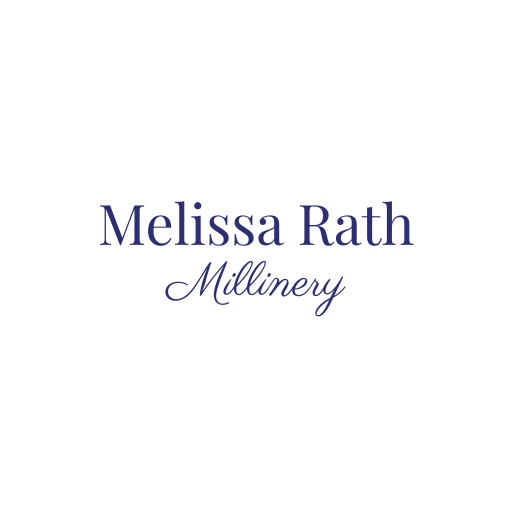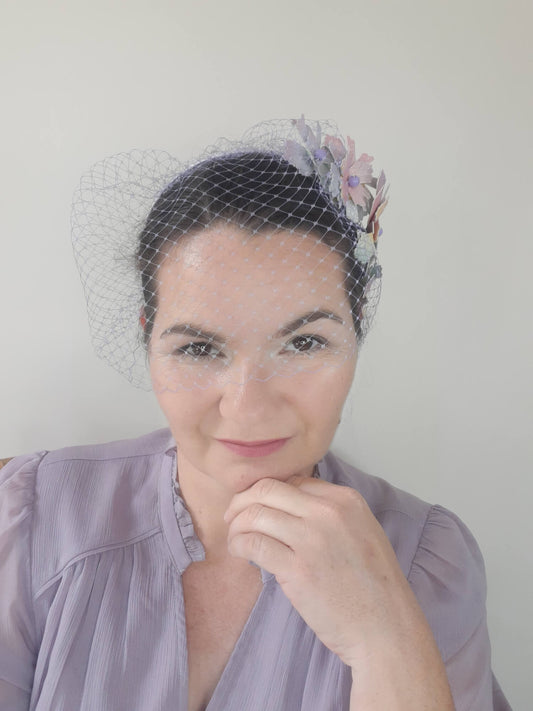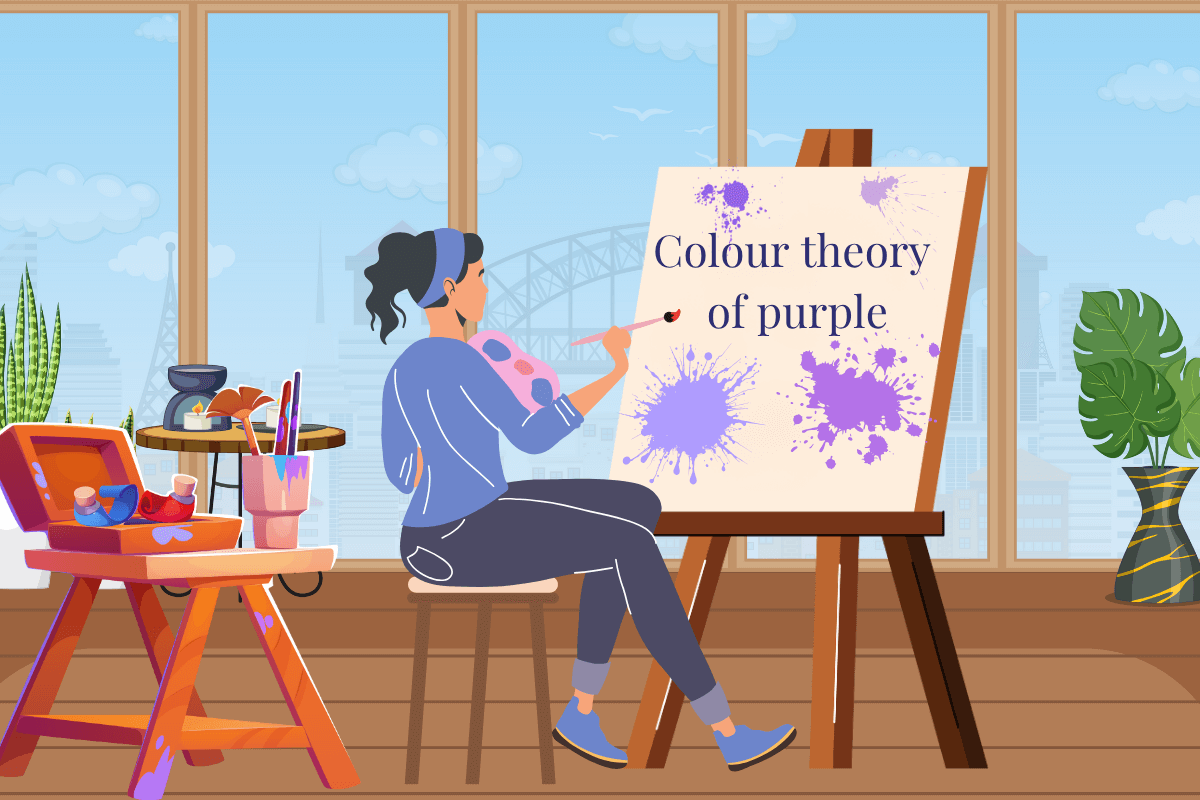
Purple in Colour Theory: The Perfect Blend of Passion and Tranquility
Welcome back to our vibrant exploration of colour theory! So far, we’ve journeyed through the passionate depths of red, the playful charm of pink, the energetic flair of orange, the sunny optimism of yellow, the refreshing calm of green, and the serene versatility of blue. Today, we step into the world of purple—a colour that embodies both regal sophistication and creative mystery.
Purple is more than just a blend of red and blue; it’s a powerhouse of emotion, symbolism, and artistic depth. Whether you're crafting a luxurious palette rich in jewel tones, experimenting with bold complementary contrasts, or embracing the ethereal beauty of pastels, purple offers endless possibilities. It can evoke elegance, spark imagination, or create a sense of dreamy intrigue, making it an essential player in any designer’s toolkit.
So, if you've ever wondered how to harness the magic of purple in your compositions, read on. Let’s unlock the secrets of this enchanting hue and explore how it can transform your designs into captivating visual stories.
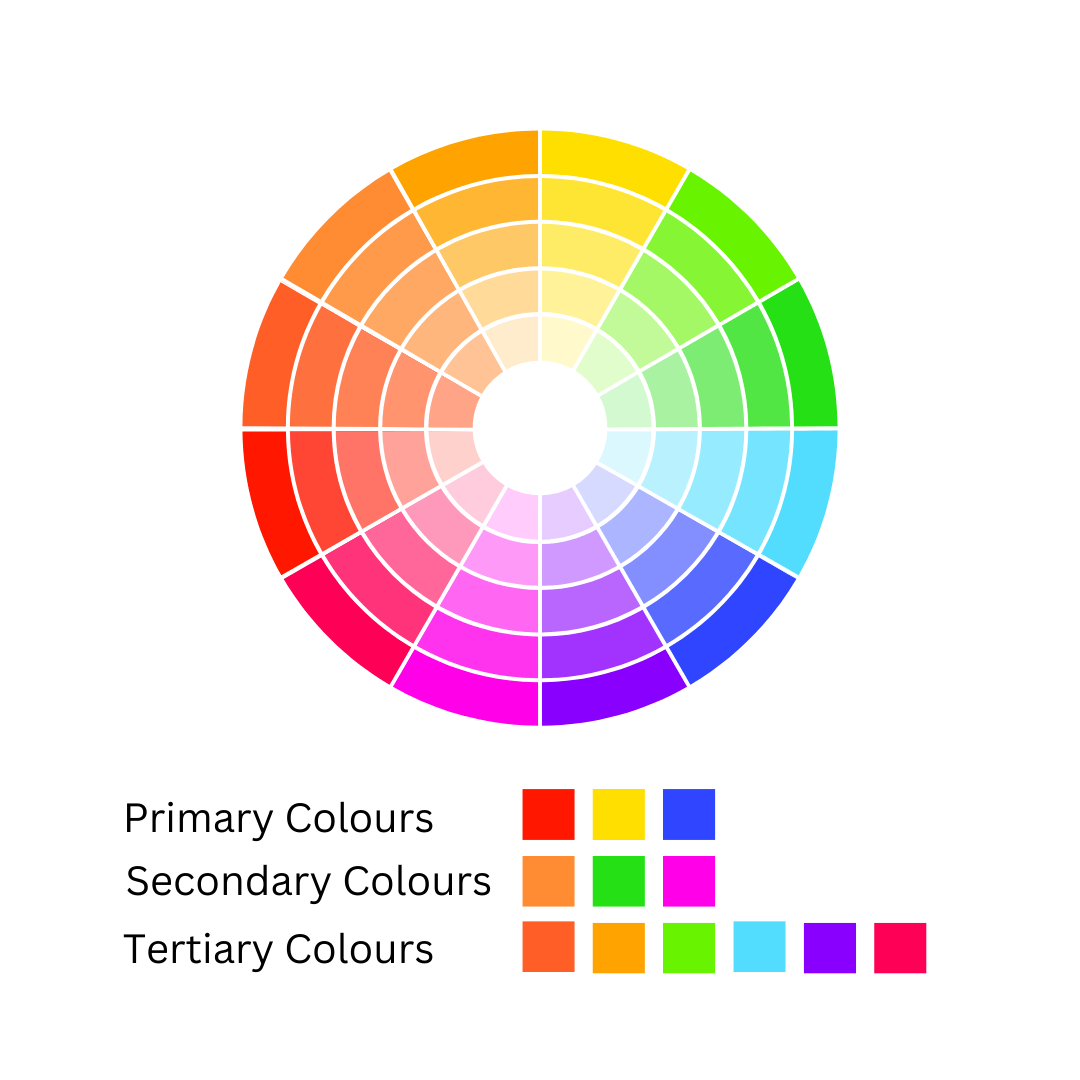
Primary colours—red, yellow, and blue—are the foundational hues that cannot be created by mixing other colours. Secondary colours are formed by combining equal parts of two primary colours, while tertiary colours result from mixing a primary colour with a neighbouring secondary colour, such as red with orange.
In colour theory, the term hue refers to the basic colour families, such as red, green, or blue—essentially the colours of the rainbow. It’s important to note that black, white, grey, and brown are not considered hues. Value describes the lightness or darkness of a colour, measured on a scale from 0 to 10, with 0 representing black and 10 representing pure white. Chroma, meanwhile, refers to a colour’s intensity or saturation—its vividness or dullness.

When we talk about shades, tints, and tones, we’re discussing variations of pure colour. A shade is created by mixing a pure colour with black, a tint is made by adding white, and a tone results from blending a colour with grey.
Temperature is another concept in colour theory, often encountered in discussions about personal colour analysis or seasonal palettes. Colour temperature refers to whether a colour has a warm undertone (yellow) or a cool undertone (blue). This distinction plays a crucial role in determining which colours suit certain complexions or settings.
One of the most valuable aspects of colour theory is the idea of colour harmony, which refers to the combinations of colours that produce aesthetically pleasing results. Common colour harmonies include:
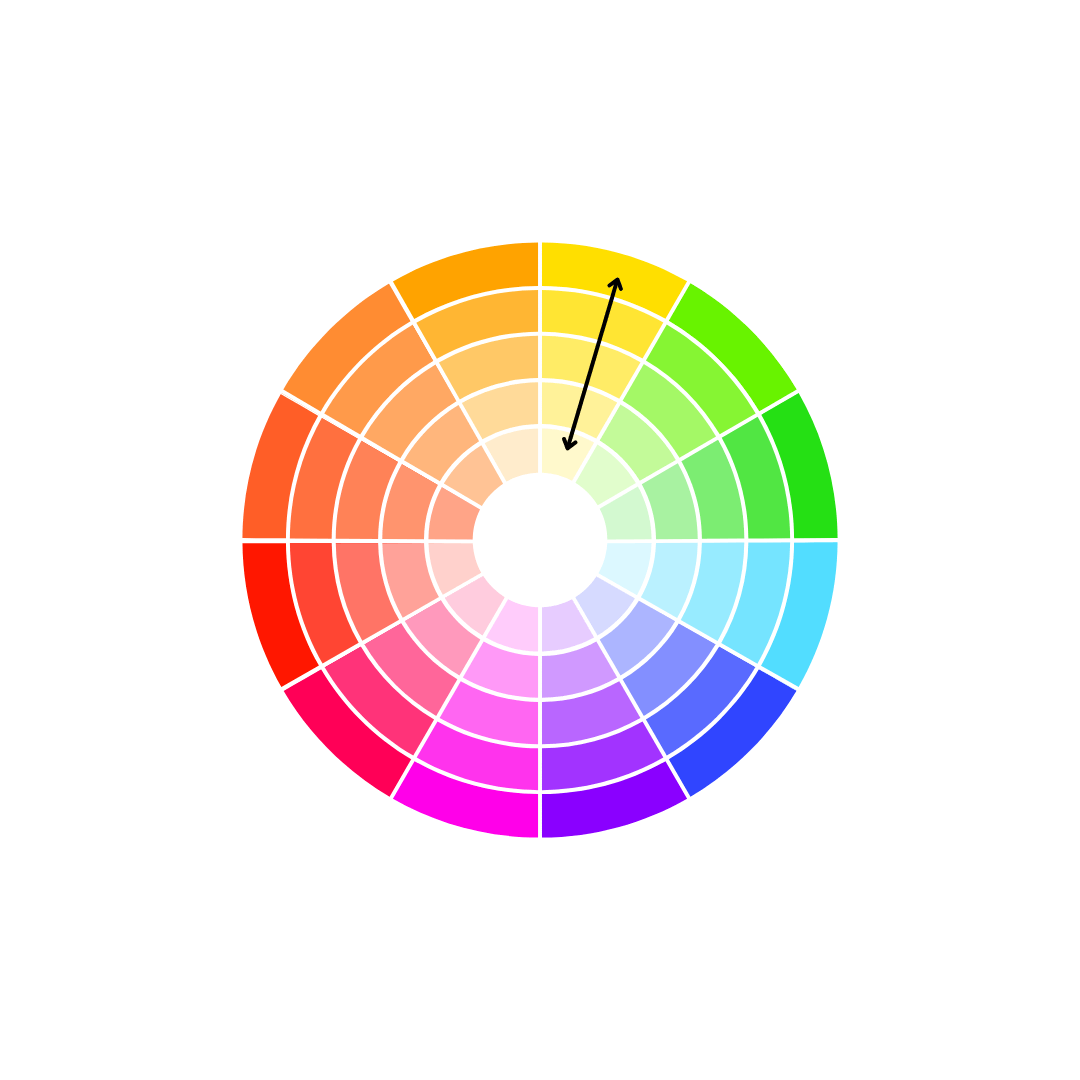
Monochromatic
A single colour in various shades, tints, or tones.
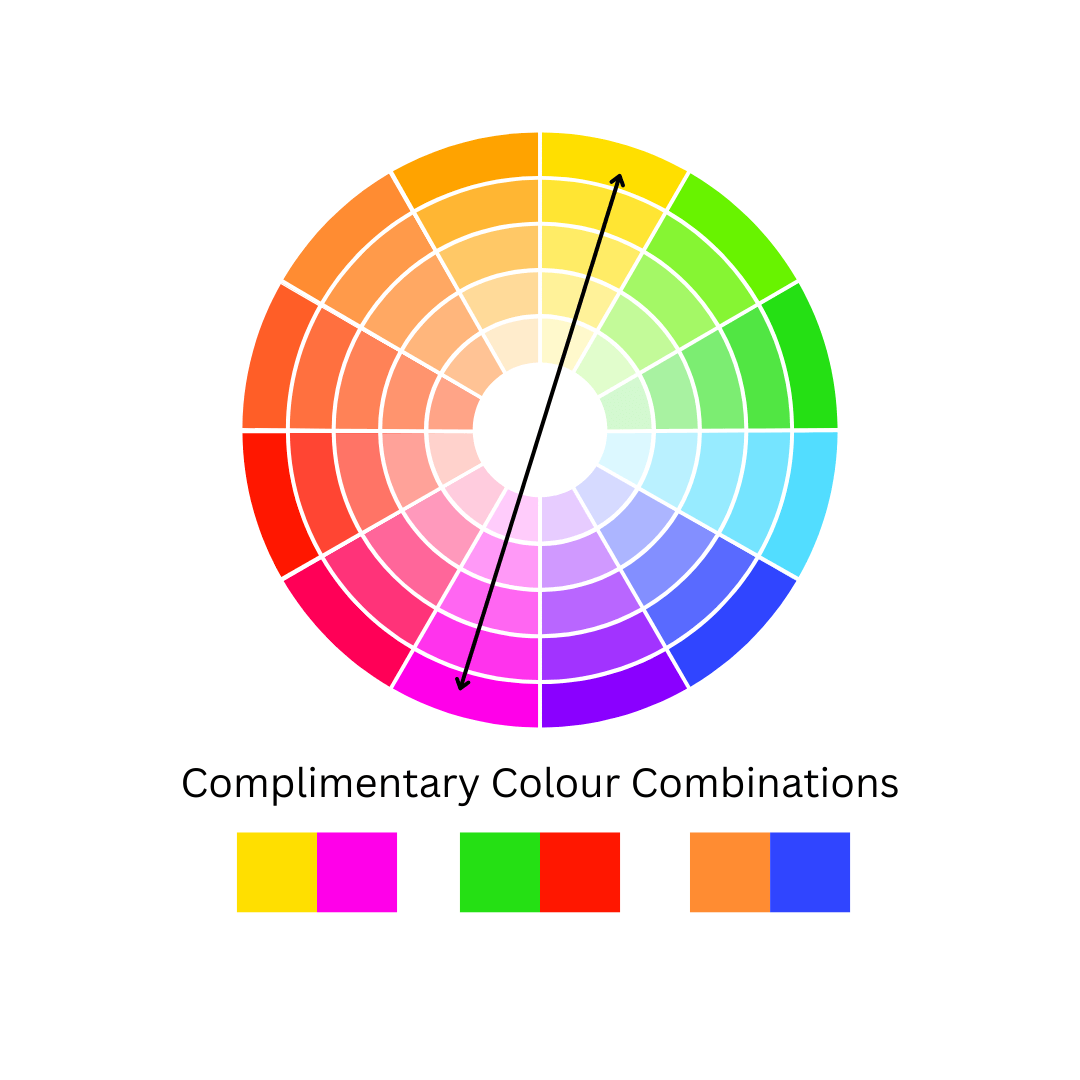
Complementary
Colours that are directly opposite each other on the colour wheel, such as red and green, blue and orange, or yellow and purple.

Split Complementary
A key colour paired with two complementary colours on either side of its direct opposite on the colour wheel. For example, with yellow as the key colour, the complementary colours would be red-purple and blue-purple.
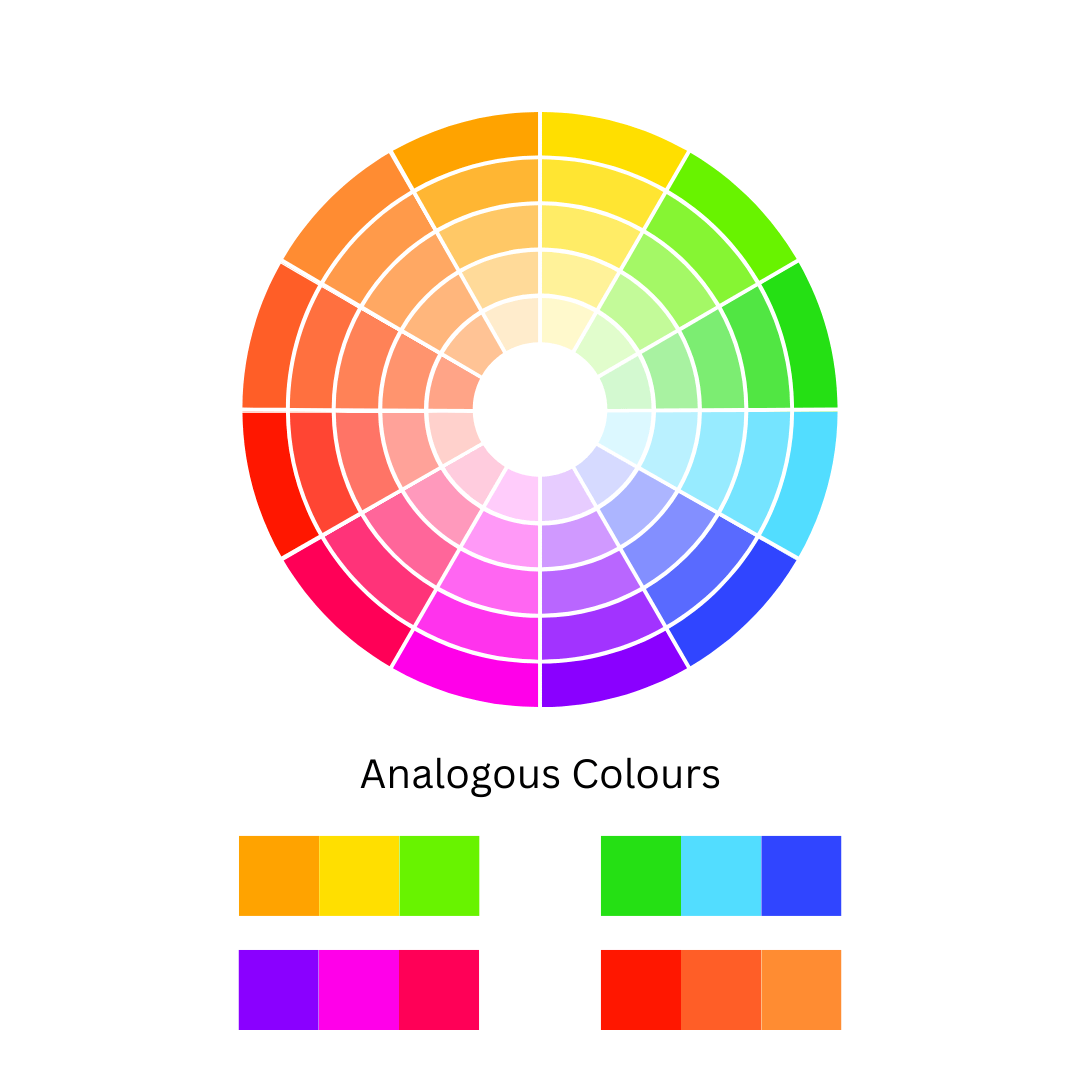
Analogous
A group of three colours that sit next to each other on the colour wheel, such as green-blue, blue, and blue-purple.
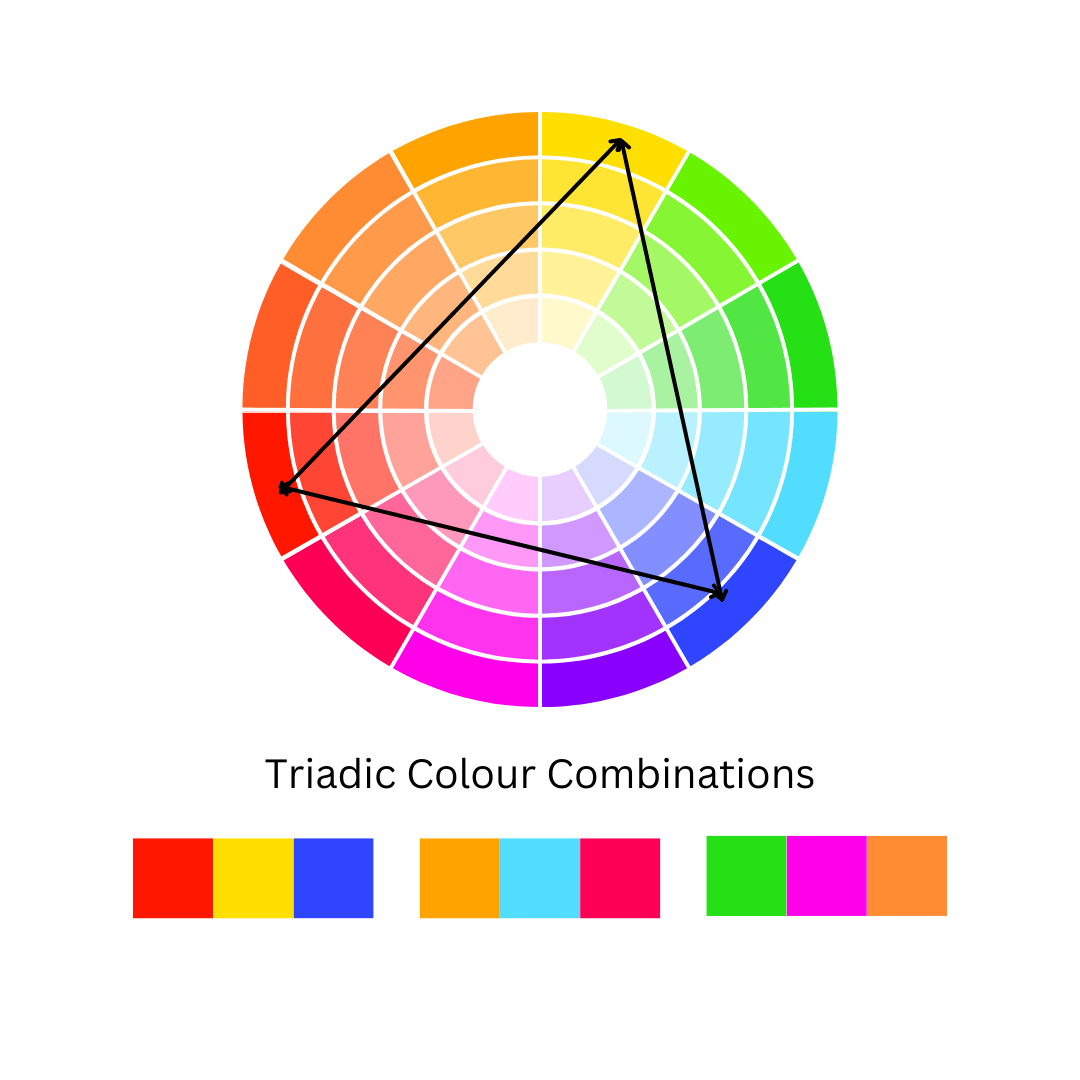
Triadic
A trio of colours evenly spaced around the colour wheel, like red, yellow, and blue.
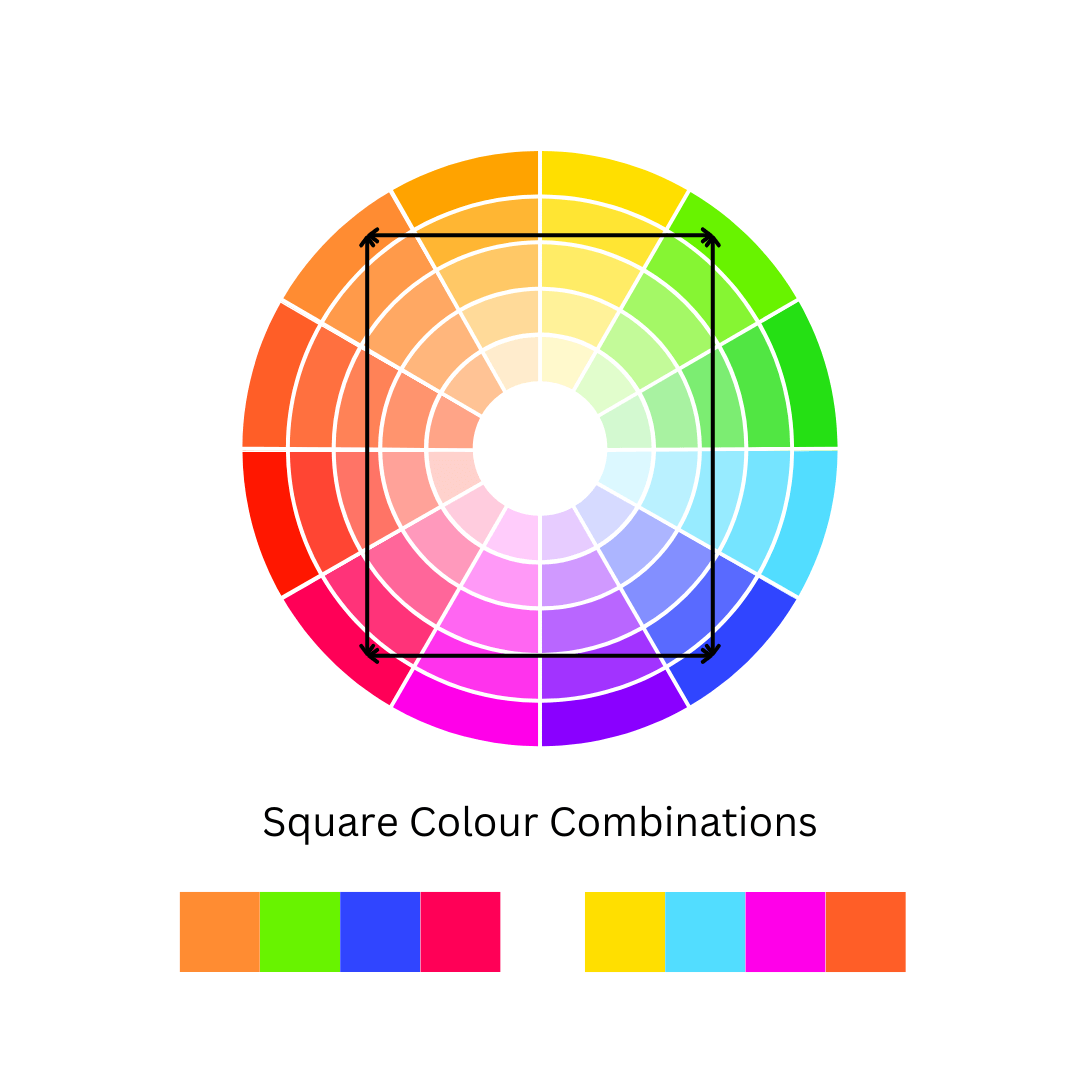
Square
Four colours that are evenly spaced apart on the colour wheel, forming a square when connected.
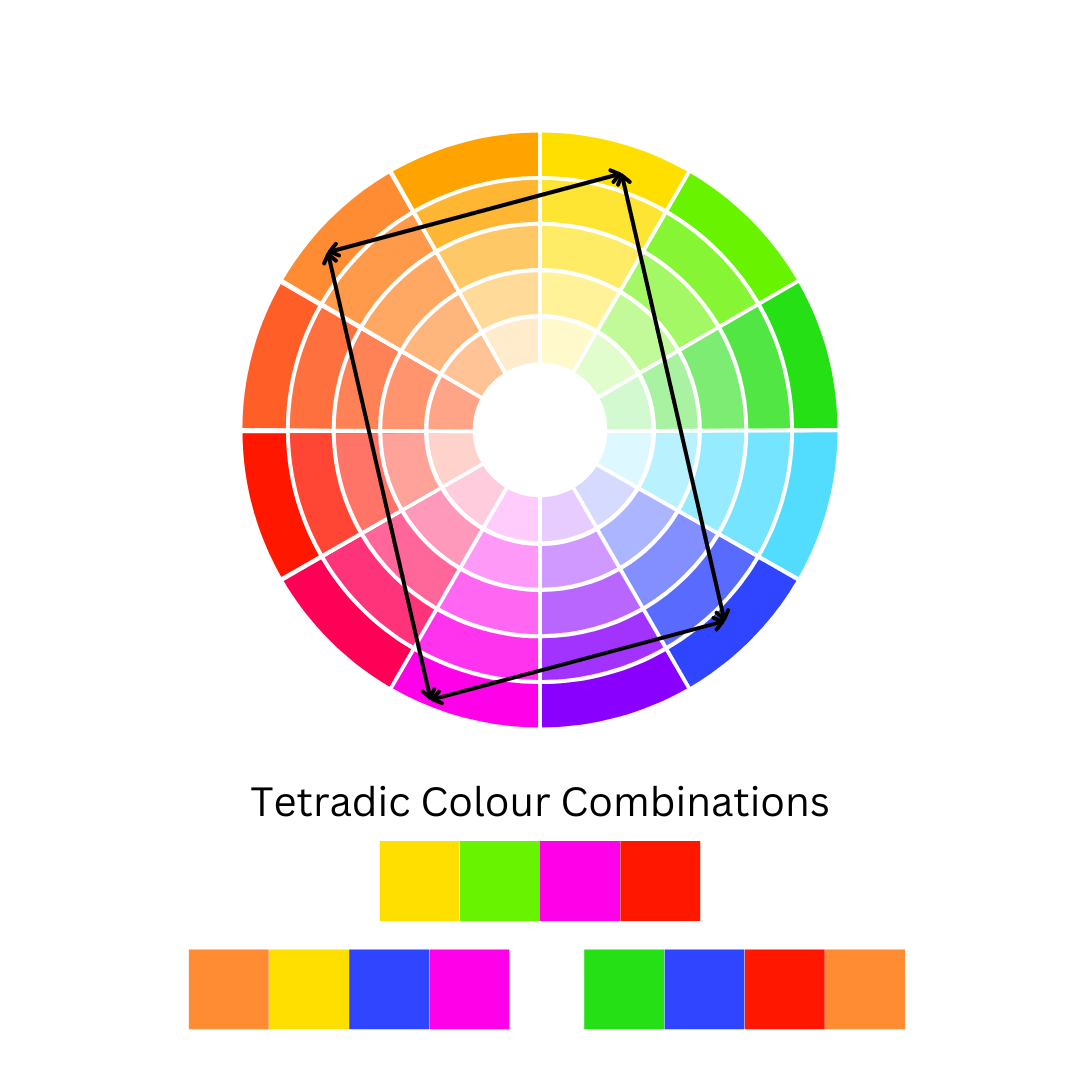
Tetradic
A colour scheme involving four colours that, when connected on the colour wheel, form a rectangle.
Colour theory is the foundation of great design, helping us understand how different hues interact, evoke emotions, and create visual balance. Whether you're working with complementary contrasts, analogous harmonies, or bold triadic palettes, each colour plays a unique role in shaping the overall aesthetic. Among them, blue stands out as one of the most versatile and widely used colours. Known for its calming presence and strong associations with stability and trust, blue effortlessly adapts to various colour schemes—sometimes acting as a grounding force, other times as a striking focal point. But how exactly does blue interact with other colours to create these dynamic effects? Let’s explore how blue works within different palettes and how you can use it to craft stunning, well-balanced designs.
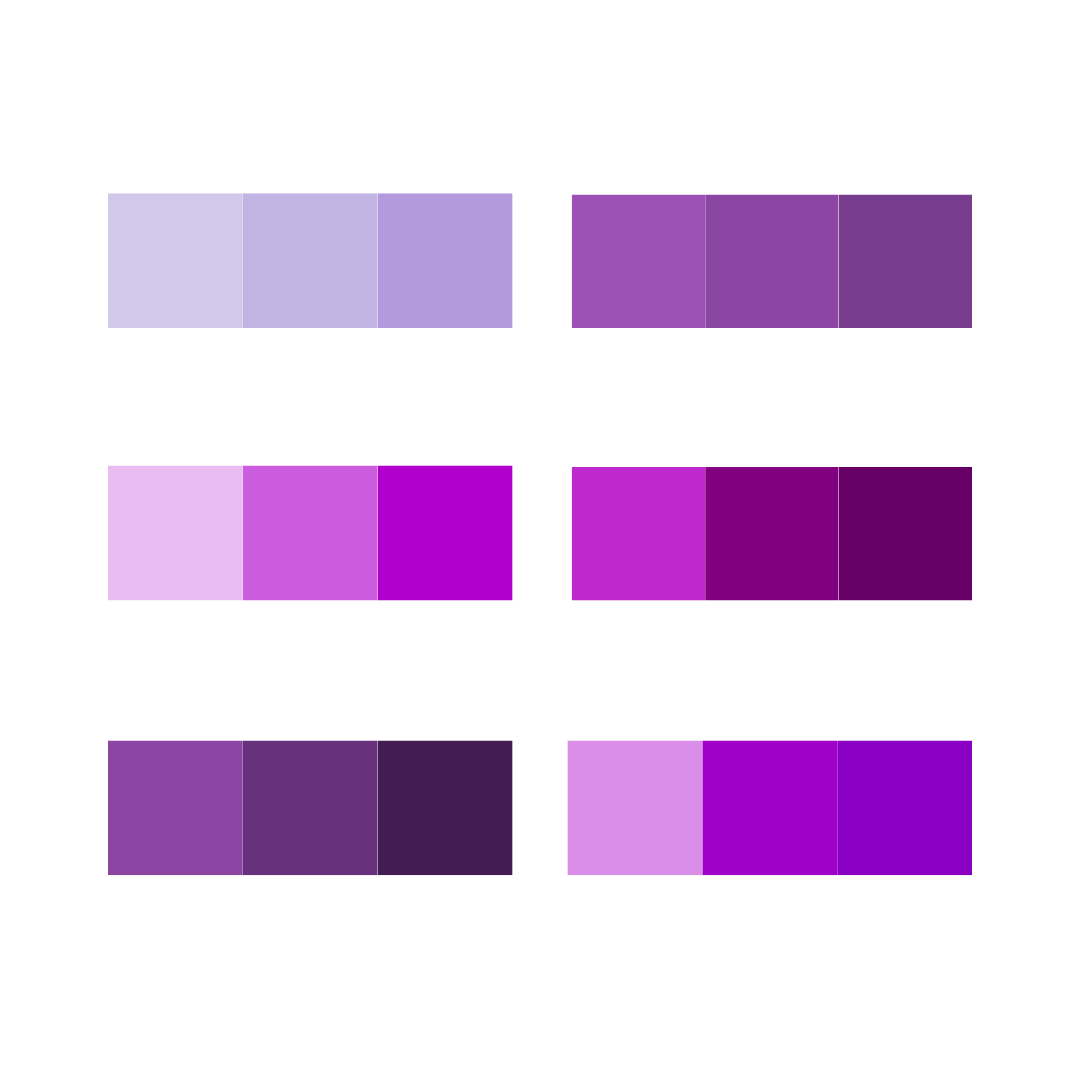
Monochromatic Schemes
A monochromatic colour scheme built around purple exudes sophistication, creativity, and depth. By playing with variations in tone, tint, and shade—from the softest lavender to rich, velvety aubergine—you can create a visually cohesive design that feels both luxurious and enchanting. Whether aiming for a dreamy, ethereal atmosphere or a bold, dramatic statement, a purple-based palette offers endless possibilities for elegance and intrigue.

Complementary Colour Schemes
A complementary colour scheme featuring purple creates a bold and captivating contrast by pairing it with its opposite on the colour wheel—yellow. This combination balances the rich, mysterious allure of purple with the bright, uplifting energy of yellow, resulting in a dynamic and visually striking effect. Whether used in vibrant, high-contrast designs or softened for a more refined look, this duo brings a perfect blend of drama and harmony.

Split Complementary Colour Schemes
A split complementary colour scheme using purple offers a balanced contrast with a slightly softer effect than a true complementary scheme. Instead of pairing purple directly with yellow, this approach combines purple with the two colours adjacent to yellow—yellow-orange and yellow-green. This creates a visually dynamic yet harmonious palette, blending purple’s depth with warm vibrancy and a touch of freshness.
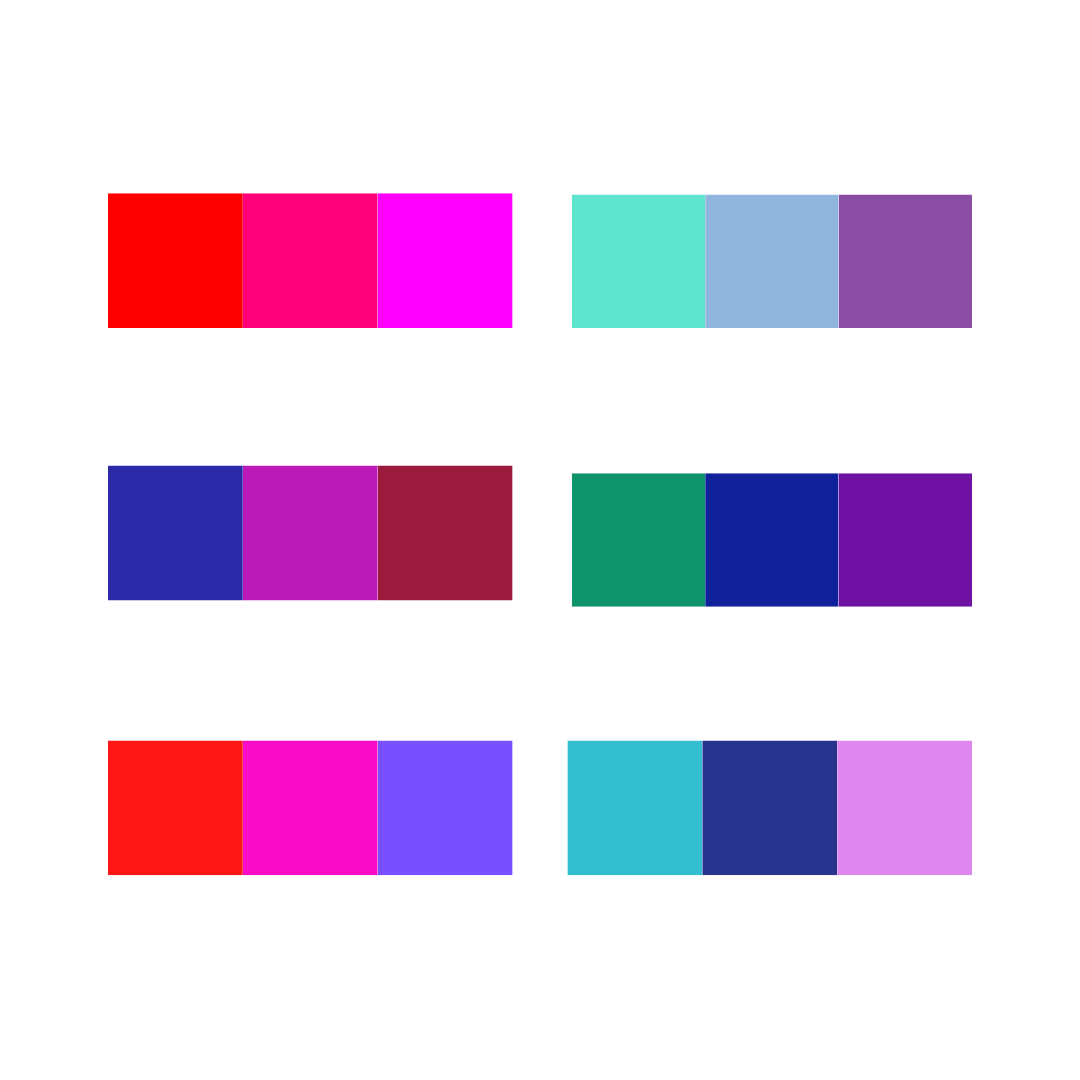
Analogous Colour Schemes
An analogous colour scheme featuring purple creates a naturally harmonious and visually captivating effect by pairing it with colours that sit next to it on the colour wheel—red-violet and blue-violet. This combination enhances purple’s richness while adding depth and a seamless flow of colour, making it perfect for elegant, creative, or serene designs.

Triadic Colour Scheme
A triadic colour scheme featuring purple creates a vibrant and balanced composition by combining it with two other colours evenly spaced on the colour wheel—green and orange. This trio forms a dynamic yet harmonious palette, as the warm energy of orange and the fresh vibrancy of green contrast beautifully with purple’s rich, enigmatic presence.
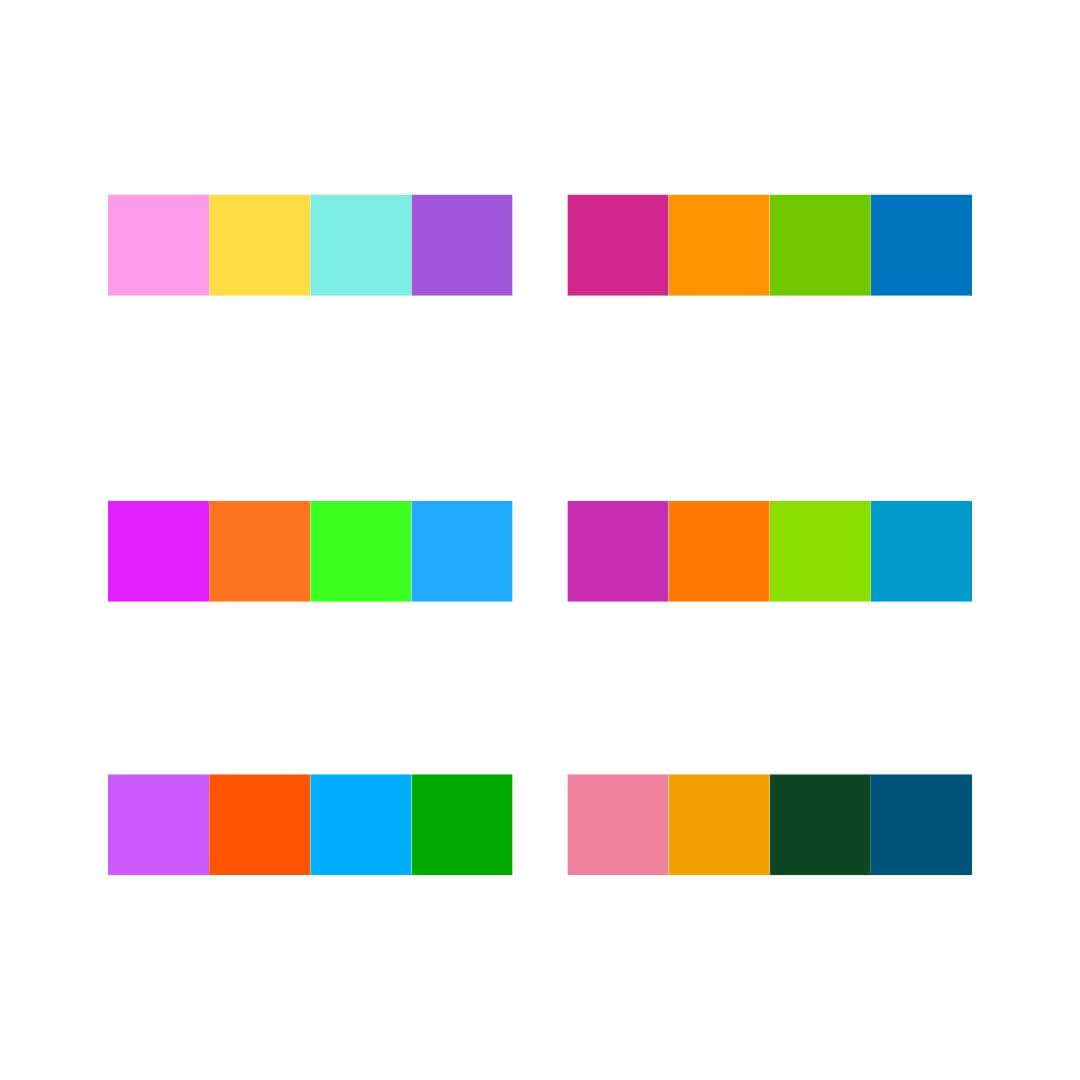
Square Colour Scheme
A square colour scheme featuring purple creates a bold and dynamic palette by using four colours evenly spaced around the colour wheel—purple, red, yellow-green, and blue-green. This combination balances warm and cool tones, providing strong contrast while maintaining a sense of harmony and visual interest.
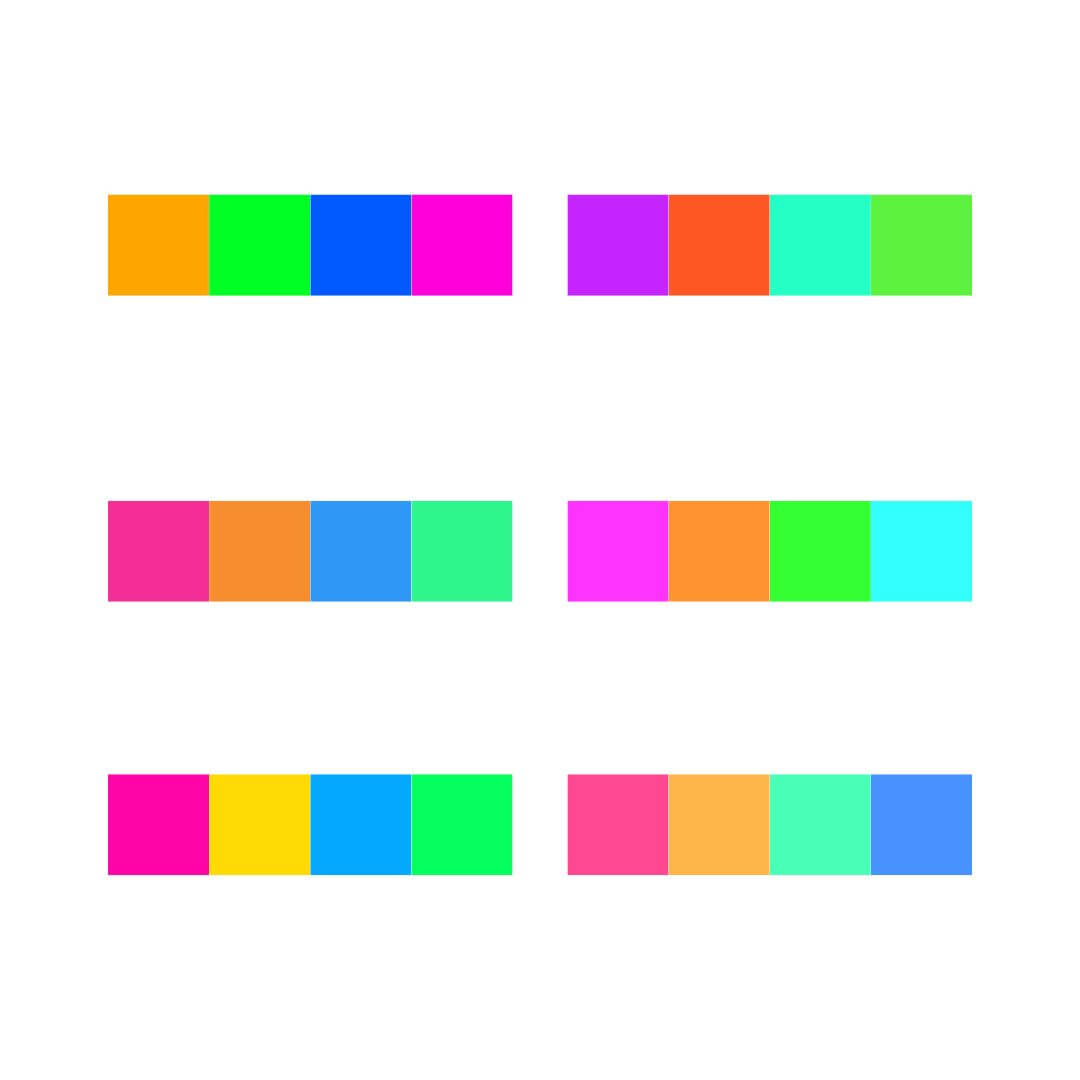
Tetradic Colour Schemes
A tetradic colour scheme featuring purple is a rich and dynamic palette that uses four colours arranged in two complementary pairs—purple, yellow, blue-green, and red-orange. This scheme offers both contrast and variety, blending purple’s depth with the warmth of yellow, the freshness of blue-green, and the energy of red-orange for a visually striking and well-balanced composition.
The Emotional Impact of Wearing Purple
Wearing the colour purple can evoke a sense of sophistication, creativity, and mystery. Often associated with royalty, wisdom, and spirituality, purple carries an air of elegance and intrigue. Lighter shades like lavender exude a soft, romantic, and calming presence, while deeper tones like plum or aubergine convey confidence, luxury, and depth. Whether used to make a bold statement or to add a touch of refinement, purple has the power to inspire imagination, encourage introspection, and leave a lasting impression.
Purple Colour Schemes on the Streets
-

Monochromatic
-

-

-

Complimentary
-

-

-

Analogous
-

-

-

Triadic
-

-

Bringing Colour Theory to Life
In conclusion, purple is a colour that transcends simple aesthetics—it carries with it layers of emotion, meaning, and endless possibilities. From its regal history to its ability to inspire creativity and evoke both calm and energy, purple stands as a versatile and powerful tool in design and fashion. Whether you’re working with monochromatic schemes, bold contrasts, or harmonious palettes, purple can elevate any composition, adding depth, intrigue, and sophistication. So, next time you incorporate this captivating hue into your designs or wardrobe, remember the emotional impact it can have—transforming the ordinary into the extraordinary.
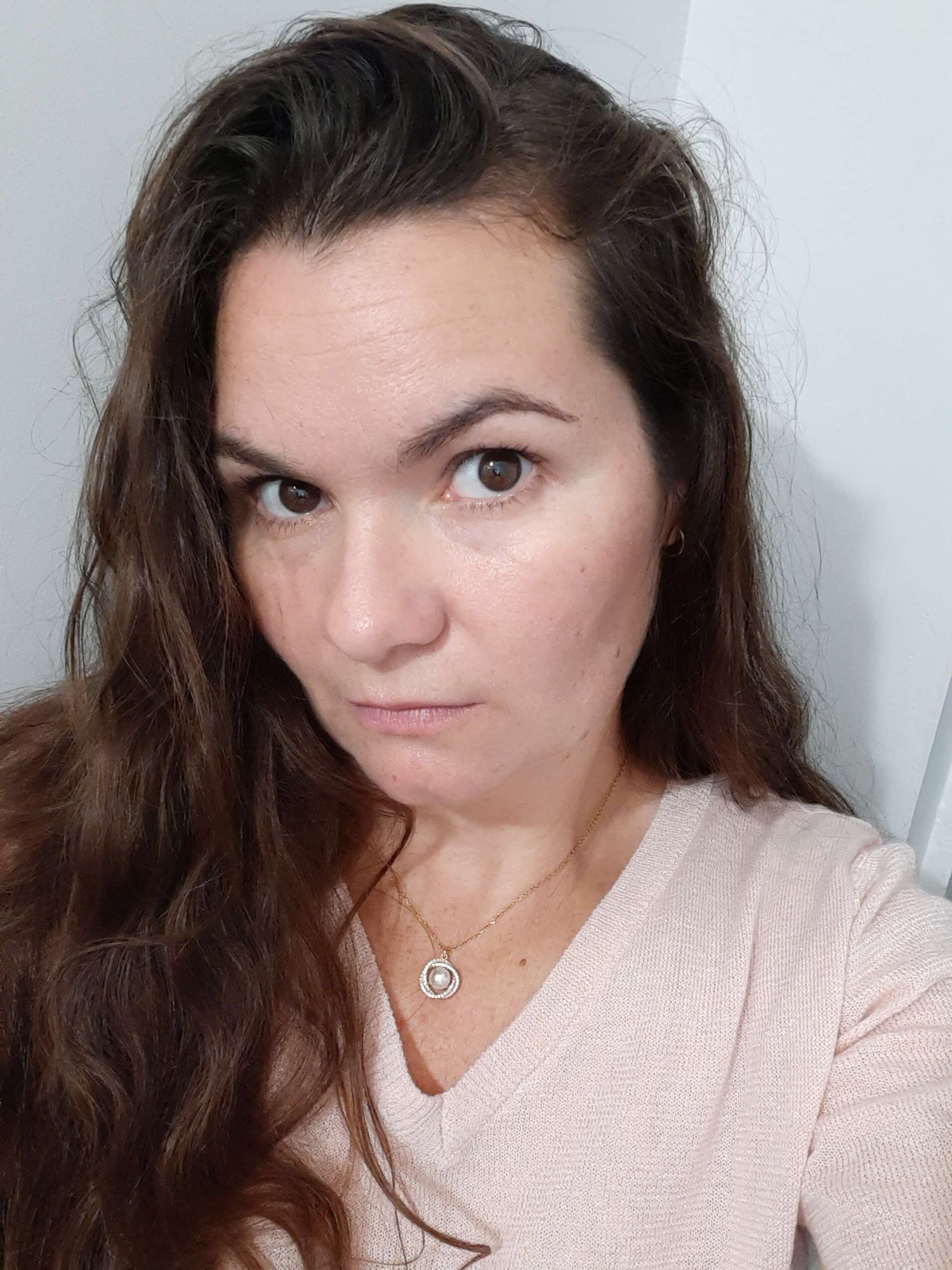
About the Author
Melissa Rath is an Australian milliner creating unique, handcrafted hats. She shares insights on design, styling, colour theory, the history of hats and all things millinery.
Featured collection
-
Yellow Millinery Fascinator by Melissa Rath Millinery
Regular price $220.00 AUDRegular priceUnit price / per -
Rainbow Veiled Headband with Pleather Flowers by Melissa Rath Millinery
Regular price $250.00 AUDRegular priceUnit price / per -
Purple Organza Millinery Fascinator by Melissa Rath Millinery
Regular price $220.00 AUDRegular priceUnit price / per -
Purple Millinery Boater Hat by Melissa Rath Millinery
Regular price $320.00 AUDRegular priceUnit price / per
